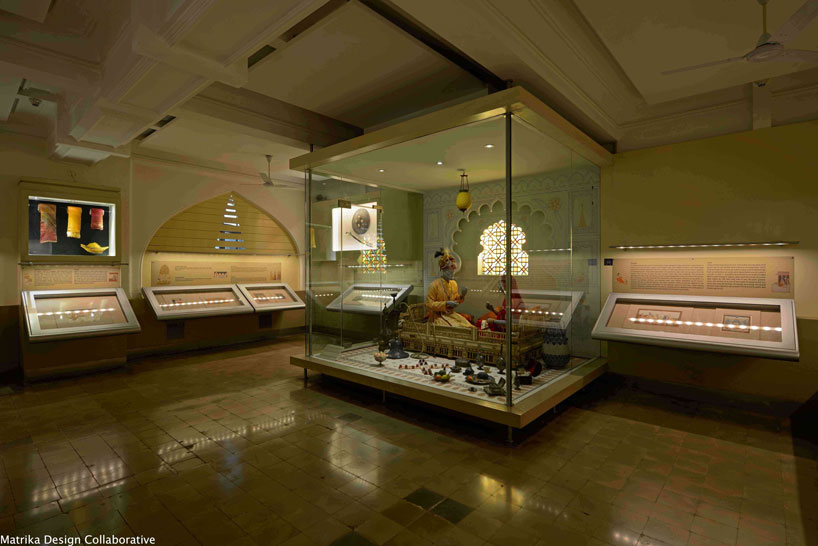
gallery of indian miniature paintings by Abhishek Ray from india
designer's own words:
The Gallery of Indian Miniature Painting is based in the larger realm of development of cultural institutions in India. Case in point is the ubiquitous museum which has remained one of the least understood environments for learning of Indian cultural heritage amongst the masses. The idea of museum is fast changing to ensure a metamorphosis of its function of being a repository of tangible material culture to an experiential learning experience. The development of the new museum concepts in India today is a participatory process involving museum museum designers and curators who concoct a narrative based on the tangible and intangible heritage of the country through the design of macro and micro environments centred around the object.
This Gallery is one of the pioneering examples of new museum development in India. Housed in the CSMVS( Formerly: The Prince of Wales Museum, Mumbai) it holds a diverse collection of Indian Miniature Paintings from the various schools and regions in the country. The conceptual development of the gallery was based on developing a democratic comprehension of the art form for the discerning visitor and the masses . This was achieved through contextual linkages between collections such as textiles, arms and armoury, manuscripts and decorative arts. An experiential environment for children to engage in corollary activities of painting and craft was envisaged through the use of technology.
The design interventions for the gallery thus become a comprehensive and coordinated execution of interior design coupled with the development of products involving specialised exhibition cases conforming to conservation standards and practice. New age metal exhibition cases were designed to ergonomically conform to universal access and while playing the essential role of creating the apt micro-environment and security for the treasured collection.Additionally lighting design played a pivotal role in the illumination of the art work and created a light defined appreciation of the gallery for the first time in Indian museums. LED lighting in various forms with appropriate scaling of luminosity and colour temperatures were introduced for the first time at the museum. Visual communication using graphic panels and magnified illustrations from the paintings interspersed with stage wise depiction of production process of the art and cross collection references (e.g. Diorama of a Zenana: Queens Chamber) was key to the effective understanding of the art and its relationship with material culture and tradition.
The advent of technological interventions in the museum sphere was directed towards generating interest amongst children who are the focus of the museum education programs being developed today to ensure appreciation of Indian art and culture. Capacitive Games and activity based sketching/ colouring interfaces allow children to explore painting in the context of Indian Miniatures.
The design process followed for the development of the Gallery of Indian Miniature Paintings remains a benchmark for similar museum projects for Matrika Design Collaborative around the country. It has allowed us to develop a unique strategy for museum design contextually for Indian Museums and cultural centres and centres around art, culture, collection, design, education and experience.
Diorama of the Zenana: Reference from Paintings originating in Rajasthan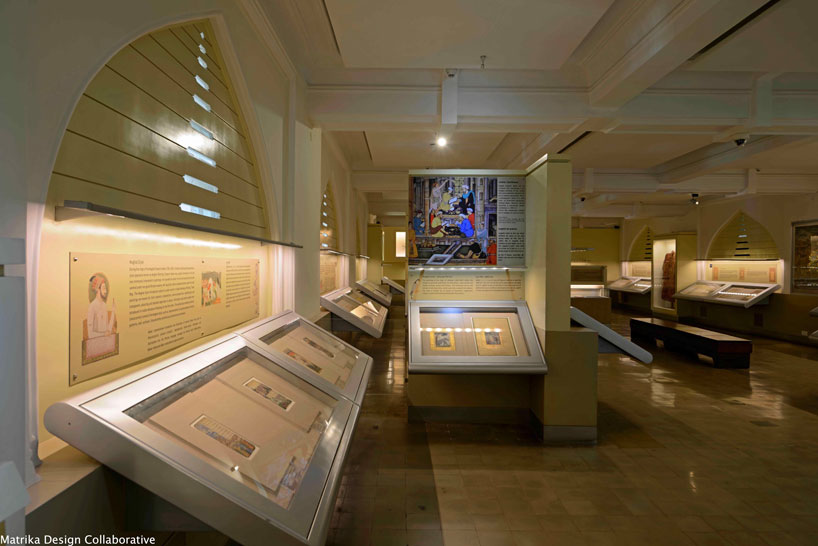 Designing around Elements of Heritage, Painting Cases and Associative Collection
Designing around Elements of Heritage, Painting Cases and Associative Collection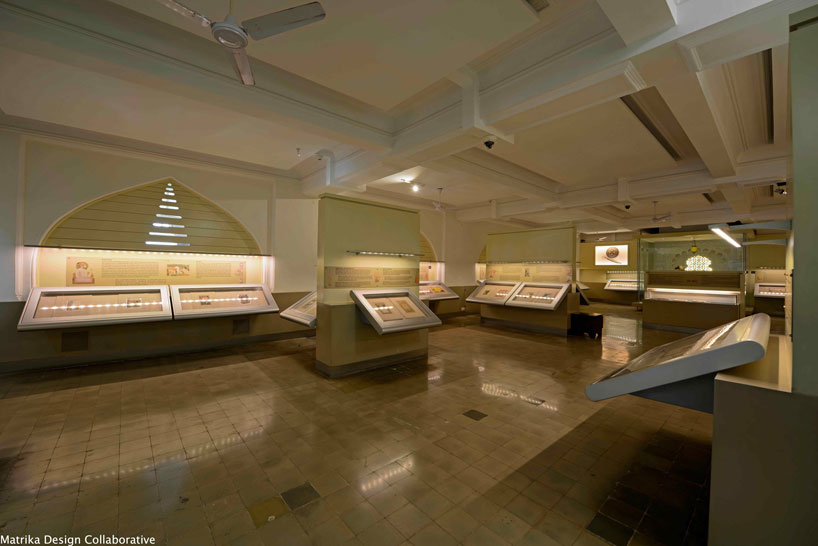 Gallery Space with Various Sections representing Schools of Indian Miniature Paintings
Gallery Space with Various Sections representing Schools of Indian Miniature Paintings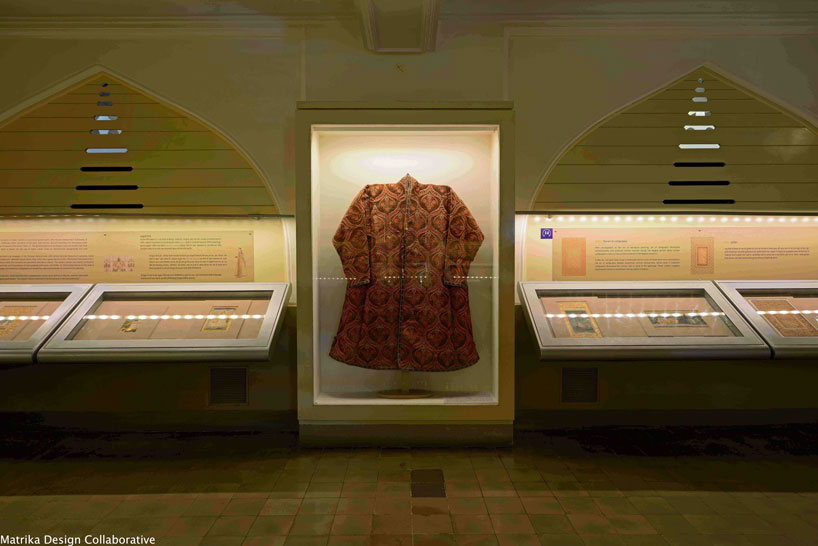 Cross Collection References: Textiles: Deccani Jama from the Paintings from the Deccan
Cross Collection References: Textiles: Deccani Jama from the Paintings from the Deccan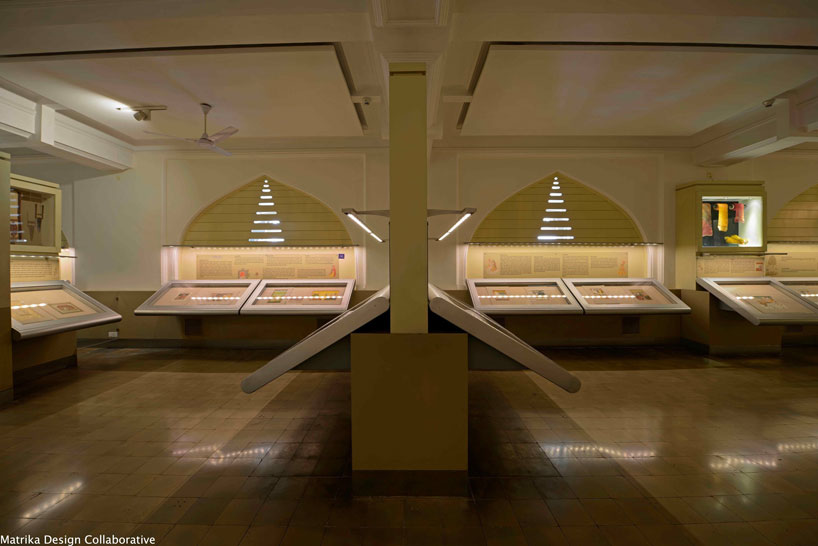 Specialised Lighting Techniques and Ergonomically designed Cases
Specialised Lighting Techniques and Ergonomically designed Cases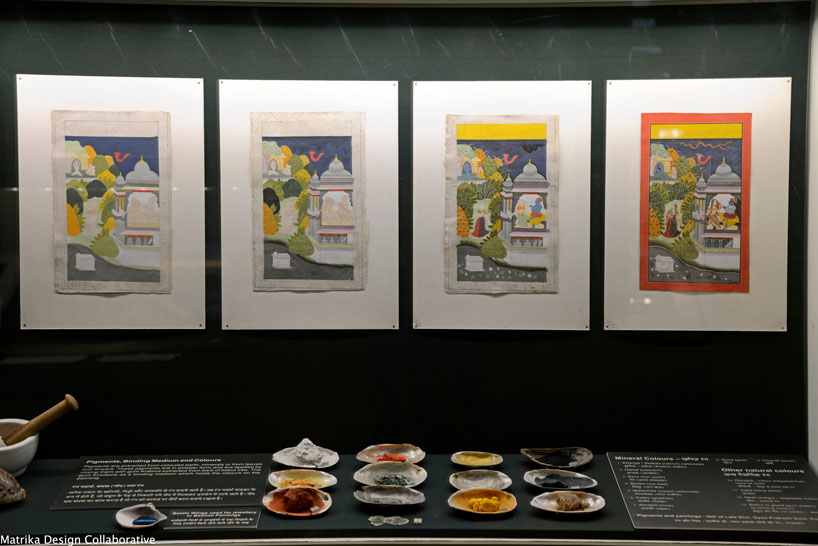 Stages of Production of Indian Miniatures
Stages of Production of Indian Miniatures